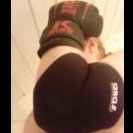From Nabokov to Karuhat: The Uses of Style to Overcome Difficulty
-
Most Recent Topics
-
Latest Comments
-
By Kevin von Duuglas-Ittu · Posted
more on Noir aesthetics... -
By Kevin von Duuglas-Ittu · Posted
Some beautiful examples from the Contax 645, from Rambaa's festival card this week, where you can feel both the space AND the details, more than I even intuited. This to my eye is very close to a "natural" view, with just a little artifice to give it that oneiric feeling, which is related to my larger Noir sensibilities. -
I'm not sure which video you watched but Sylvie has a whole clinch playlist Hop In Clinch Entry Getting in & Staying In Clinch Basics Seminar
-
-
The Latest From Open Topics Forum
-
The first fight between Poot Lorlek and Posai Sittiboonlert was recently uploaded to youtube. Posai is one of the earliest great Muay Khao fighters and influential to Dieselnoi, but there's very little footage of him. Poot is one of the GOATs and one of Posai's best wins, it's really cool to see how Posai's style looked against another elite fighter.
-
By FuckedElbow-Muay · Posted
Yeah, this is certainly possible. Thanks! I just like the idea of a training camp pre-fight because of focus and getting more "locked in".. Do you know of any high level gyms in europe you would recommend? -
You could just pick a high-level gym in a European city, just live and train there for however long you want (a month?). Lots of gyms have morning and evening classes.
-
By FuckedElbow-Muay · Posted
Hi, i have a general question concerning Muay-Thai training camps, are there any serious ones in Europe at all? I know there are some for kickboxing in the Netherlands, but that's not interesting to me or what i aim for. I have found some regarding Muay-Thai in google searches, but what iv'e found seem to be only "retreats" with Muay-Thai on a level compareable to fitness-boxing, yoga or mindfullness.. So what i look for, but can't seem to find anywhere, are camps similar to those in Thailand. Grueling, high-intensity workouts with trainers who have actually fought and don't just do this as a hobby/fitness regime. A place where you can actually grow, improve technique and build strength and gas-tank with high intensity, not a vacation... No hate whatsoever to those who do fitness-boxing and attend retreats like these, i just find it VERY ODD that there ain't any training camps like those in Thailand out there, or perhaps i haven't looked good enough?.. Appericiate all responses, thank you! -
In my experience, 1 pair of gloves is fine (14oz in my case, so I can spar safely), just air them out between training (bag gloves definitely not necessary). Shinguards are a good idea, though gyms will always have them and lend them out- just more hygienic to have your own. 2 pairs of wraps, 2 shorts (I like the lightweight Raja ones for the heat), 1 pair of good road running trainers. Good gumshield and groin-protector, naturally. Every time I finish training, I bring everything into the shower (not gloves or shinnies, obviously) with me to clean off the (bucketsfull in my case) of sweat, but things dry off quickly here outside of the monsoon season. One thing I have found I like is smallish, cotton briefs for training (less cloth, therefore sweaty wetness than boxers, etc.- bring underwear from home- decent, cotton stuff is strangely expensive here). Don't weigh yourself down too much. You might want to buy shorts or vests from the gym(s) as (useful) souvenirs. I recommend Action Zone and Keelapan, next door, in Bangkok (good selection and prices): https://www.google.com/maps/place/Action+Zone/@13.7474264,100.5206774,17z/data=!4m14!1m7!3m6!1s0x30e29931ee397e41:0x4c8f06926c37408b!2sAction+Zone!8m2!3d13.7474212!4d100.5232523!16s%2Fg%2F1hm3_f5d2!3m5!1s0x30e29931ee397e41:0x4c8f06926c37408b!8m2!3d13.7474212!4d100.5232523!16s%2Fg%2F1hm3_f5d2?entry=ttu&g_ep=EgoyMDI0MTAyOS4wIKXMDSoASAFQAw%3D%3D
-
-
Forum Statistics
-
Total Topics1.4k
-
Total Posts11.4k
-
Footer title
This content can be configured within your theme settings in your ACP. You can add any HTML including images, paragraphs and lists.
Footer title
This content can be configured within your theme settings in your ACP. You can add any HTML including images, paragraphs and lists.
Footer title
This content can be configured within your theme settings in your ACP. You can add any HTML including images, paragraphs and lists.


Recommended Posts
Create an account or sign in to comment
You need to be a member in order to leave a comment
Create an account
Sign up for a new account in our community. It's easy!
Register a new accountSign in
Already have an account? Sign in here.
Sign In Now